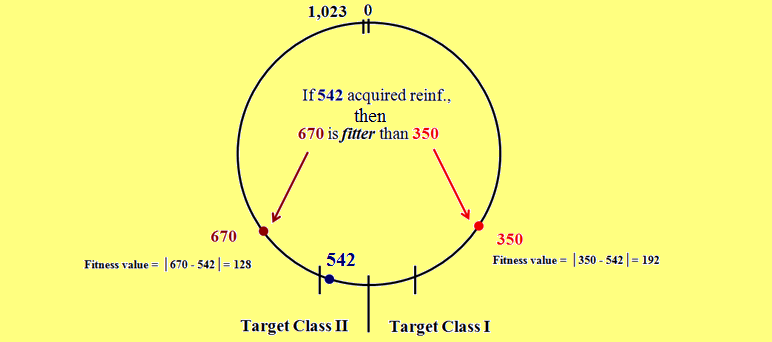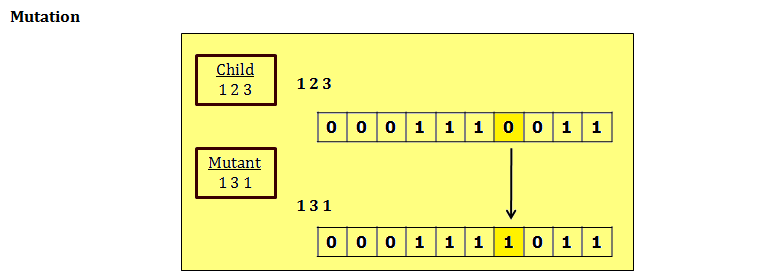Behaviors
The selectionist theory operates on a population of potential behaviors, each of which is represented by a 10-character sequence of 0s and 1s. These ten-character bit strings range from ‘‘0000000000’’ to ‘‘1111111111’’ and constitute binary representations of the decimal integers. A behavior’s bit string is its genotype; the decimal integer into which the bit string decodes is its phenotype. The top panel of Figure A1 shows a frequency distribution of 100 behavioral phenotypes drawn at random from the range 0 through 1023. This is a population of potential behaviors.
The target classes
When arranging a continuous choice procedure (a concurrent-schedule environment) we select the location and size of the target classes. In this example we selected two target classes, each encompassing 41 behaviors (integers): one between 471 and 511, the other between 512 and 552 (top panel of Figure 1). The two ranges of phenotypes (integers) correspond to behaviors that successfully operate two manipulanda (e.g. various ways of pressing a lever, various ways of delivering social praise to a child). Behaviors that do not fall in either operant class are extraneous behaviors.

Emission
At each moment of time a behavior is randomly emitted from the population of potential behaviors that exists at that moment. Following emission, pairs of parent behaviors are chosen from the population and are mated to produce child behaviors, which constitute the next generation. If the emitted behavior was reinforced, then the parents are chosen on the basis of their fitness. If the emitted behavior was not reinforced, then the parents are chosen at random.
Fitness
Broadly speaking, a behavior is considered “fitter” if it is closer to the previously reinforced behavior. The fitness of the behaviors in the population is then used to choose parents according to a continuous probability density function, sometimes referred too as a parental selection function (please refer to McDowell, 2004, for mathematical details). Parents chosen in this way are relatively fit, that is, relatively close in integer value (phenotype) to the previously reinforced behavior.

.png)
Recombination
After pairs of parents are chosen, each pair is mated to produce one child behavior. Mating is illustrated in the center panel of Figure A1, which shows a form of multipoint crossover recombination of the parents’ bit strings. In this example, each bit in the child’s bit string had a 50-50 chance of coming from the same location in the father’s or the mother’s bit string. This method of recombination produces child behaviors with phenotypes that are more or less similar to the father’s, the mother’s, or both parents’ phenotypes.

Mutation
The new population produced by recombination of the parent’s bit strings then undergoes a small amount of mutation, which is illustrated in the bottom panel of Figure A1. One method of implementing mutation is called “bit flip by individual”, where each behavior in the new population has a finite probability of undergoing mutation (usually referred to as the mutation rate), which occurs by “flipping” one randomly chosen bit.

Next emission
Following mutation, a randomly chosen behavior from the population is emitted and the processes of selection (if the behavior is reinforced), reproduction, and mutation are repeated. This generates a continuous stream of behavior that can be studied just as if it were produced by a live organism. The elements described here constitute the selectionist (or computational) theory in its entirety. It has no other features, properties, or constraints.
(from McDowell & Popa, 2010)